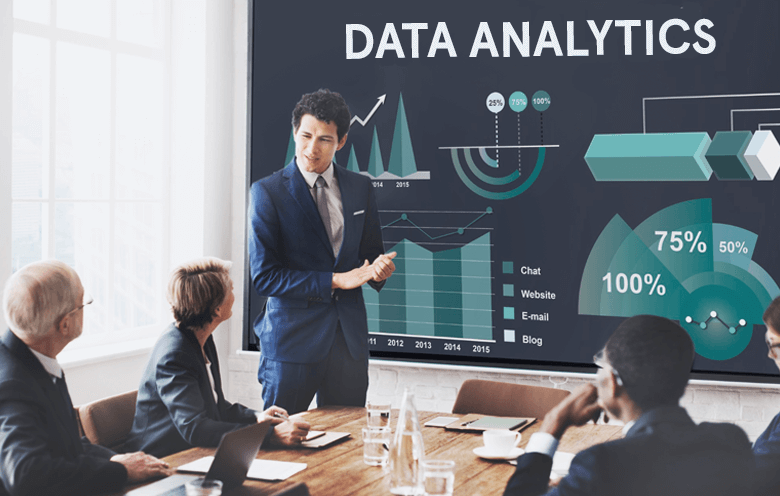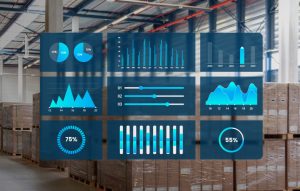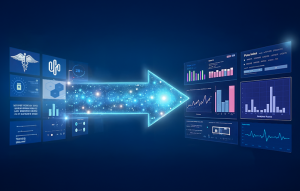As the demand for data-driven decision-making increases, organizations are increasingly recognizing the value of data analytics. However, not all businesses are fully utilizing the potential of this powerful process. One of the key reasons for this is the lack of understanding of which data analytics techniques to choose.
In this blog, we have highlighted the importance and types of data analytics for you to understand which one is appropriate for your business case. We will also discuss the role of various data analytics services.
What is data analytics and why is it important?
Data analytics is the process of collecting, cleaning, analyzing and interpreting data to gain actionable insights to improve decision-making. It is a powerful tool that can be used in a variety of industries, including business, healthcare and government.
Data-driven companies are 23 times more likely to acquire customers than their peers. – Forbes
Data analytics is important because it helps businesses to:
- Make data-driven decisions: By analyzing data, businesses can identify trends and patterns. This can help them make better decisions about their products, services and marketing campaigns.
- Improve operational efficiency: Data analytics can be used to identify areas where businesses can improve their efficiency, such as by reducing costs or increasing productivity.
- Identify new opportunities: It can be used to identify new opportunities for businesses, such as new markets or new products.
- Improve customer service: Data analytics helps improve customer service by better understanding customer needs and preferences.
Suggested: Microsoft Fabric: AI-driven data analytics
1. Descriptive analytics
Descriptive analytics is the most basic type of data analytics. It is used to describe what has happened in the past. It does not try to predict the future or explain why things happened. Instead, it simply summarizes the data and identifies trends and patterns.
Descriptive analytics can be used to answer questions such as:
- What are the sales figures for the past month?
- What are the most popular products?
- What are the demographics of our customers?
- What are the trends in customer behavior?
Descriptive analytics can be used to identify areas where improvement is needed. For example, if the sales figures for the past month are down, descriptive analytics can be used to identify the reasons for the decline. This information can then be used to take corrective action.
Descriptive data analytics can also be used to identify opportunities. For example, if descriptive analytics shows that a particular product is becoming increasingly popular, this information can be used to increase marketing efforts for that product. It is a valuable technique for businesses and organizations of all sizes. It can be used to improve decision-making, identify areas for improvement, and identify opportunities.
How Netflix uses data analytics for better recommendations?
Netflix is a highly data-driven company that uses descriptive analytics to understand its users and their viewing habits. These insights are used to personalize recommendations, improve user experience and make better business decisions.
2. Diagnostic analytics
Diagnostic analytics helps businesses understand why things happened. It is used to identify causes of problems and opportunities. Diagnostic analytics is typically used after descriptive analytics has been used to identify trends and patterns in data.
Diagnostic analytics can be used to answer questions such as:
- Why did sales decline last quarter?
- Why are customers churning?
- Why are there so many defects in our products?
- Why are we not meeting our goals?
Diagnostic analytics can be used to identify the root causes of problems, which can then be addressed to improve performance. For example, if sales declined last quarter, companies could use diagnostic analytics to identify the factors that contributed to the decline, such as a change in the competitive landscape, a decline in customer satisfaction, or a problem with the product. Once the root cause of the problem has been identified, corrective action can be taken to improve performance.
This technique can also be used to identify opportunities. For example, diagnostic analytics can show that a particular customer segment is churning at a higher rate than others. This information can be used to target those customers with specific marketing campaigns.
How does Bank of America leverage diagnostic analytics?
Bank of America uses regression analysis, a part of diagnostic analytics, to spot fraudulent commercial card or wire payments in real-time. This also helps them identify the causes of fraud.
3. Predictive analytics
Predictive analytics can be used to make predictions about future sales, customer behavior and other events. It is typically used after descriptive analytics and diagnostic analytics have been used to understand the past and identify the causes of problems.
Predictive analytics can be used to answer questions such as:
- What are the chances of a customer churning?
- When will a customer make a purchase?
- Which products are likely to be popular next year?
- Which customers are likely to respond to a marketing campaign?
Predictive modeling techniques use statistical models. These models are trained on historical data to identify patterns and trends. The models can then be used to predict future events by applying the patterns and trends to new data.
How Walmart uses predictive analytics to improve customer service?
Walmart collects a vast amount of data about its customers, including their purchase history, browsing behavior, location data, and various data sources such as social media interactions, online reviews, and loyalty program participation. This data is used to train predictive models that can predict what customers are likely to buy, when they are likely to buy it, and where they are likely to buy it. The company uses this information to personalize its marketing campaigns and to improve the customer experience in its stores.
4. Prescriptive analytics
Prescriptive analytics is a type of data analytics that recommends actions that businesses should take. It is used to optimize business decisions and processes. Prescriptive analytics is the most advanced type of data analytics and is typically used after descriptive analytics, diagnostic analytics and predictive analytics have been used to understand the past, identify the causes of problems, and predict future events.
Prescriptive analytics can be used to answer questions such as:
- What should we do to increase sales?
- How can we improve customer satisfaction?
- What are the best marketing channels to use?
- How can we reduce costs?
Prescriptive data analytics can be used to recommend actions by using mathematical models and algorithms. These models are trained on historical data to identify patterns and trends. The models can then be used for decision optimization which includes recommending actions that are likely to be successful.
How Netflix uses prescriptive analytics for better recommendations and pricing?
Netflix uses prescriptive analytics to recommend movies and TV shows to customers, optimize its content library and price its subscriptions. Netflix uses a variety of factors to make its recommendations, including:
- Customer’s viewing history
- Customer’s ratings
- Customer’s demographics
- Current trends
5. Cognitive analytics
Cognitive analytics is a type of data analytics that uses artificial intelligence (AI) and machine learning to understand and interpret data. It is often described as a way of “thinking like a human” when analyzing data.
Cognitive computing can be used to answer questions such as:
- What are the most important factors that influence customer churn?
- What are the most likely causes of a machine breakdown?
- What are the best marketing channels to reach our target audience?
- What are the risks involved in this investment?
Cognitive analytics is still a relatively new field, but it is quickly gaining popularity as businesses realize the potential benefits it can offer.
Which data analytics is suitable for your business?
The type of data analytics that you choose depends on your specific needs and goals. Here are some factors to consider when making this decision:
- The type of data your business generates: Some types of data are better suited to certain types of analytics. For example, descriptive analytics is often used with historical data, while predictive analytics is often used with current or dynamic data.
- Business goal: What do you want to achieve by using data analytics? Some common goals include making better decisions, identifying opportunities and reducing costs.
- The resources available to the business: Implementing data analytics solutions can be a complex and time-consuming process. Businesses need to consider the resources they have available, such as time, money and expertise, when choosing the right type of analytics.
Transform your business with the power of data analytics
Data analytics is a powerful tool that can be used to improve business operations in many ways. It allows you to understand the past, identify the causes of problems, predict the future and recommend actions. You can make better decisions, identify opportunities and prevent problems.
Softweb Solutions is a leading data services provider specializing in data analytics using Tableau, Power BI, etc. Our data scientists help you collect, cleanse, analyze, visualize, report and consult on your data analytics needs. We help you choose the right data analytics tools and techniques for your business and implement them successfully.
Discover the power of data with our comprehensive data analytics services. We offer various types of data analysis, tailored to meet your specific business needs. Explore our diverse types of data analysis services, spanning multiple categories of data analytics, from descriptive and diagnostic to predictive and prescriptive analytics, ensuring you gain actionable insights and drive informed decision making.
The future of business is data driven. Are you ready to join the future? Contact Softweb Solutions today to learn more about how we can help you harness the power of data analytics.










